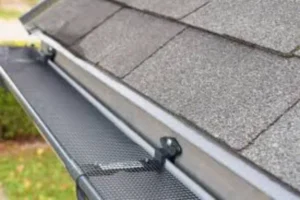The Ultimate Roof Rack Buyer’s Guide for Tacoma Owners

Imagine you’ve just completed your first overlanding adventure in your Tacoma—mud-speckled tires, a wide grin across your face, and only one thing on your mind: you could use a better method for carrying all that equipment.
A roof tent for weekend excursions or recovery boards for those not-so-unlikely accidents, the proper roof rack is what turns your truck from competent to ready for adventure.
But not all racks are created equal. From the right fit and load capacity to accessory support and weight, the options can quickly become overwhelming. That’s why choosing the right rack means more than just bolting metal to your roof—it’s about unlocking your Tacoma’s full potential.
In this guide, you’ll discover exactly what to look for, what to avoid, and how to find a system that grows with your journey. Keep reading and discover the secrets of choosing the perfect roof rack for your truck, your gear, and your next adventure.
1. Dial In the Perfect Fit for Your Tacoma
When it comes to exploring the best Tacoma roof rack options, you need to confirm that the rack is designed specifically for your Tacoma’s model, year, and cab configuration. Access Cab or Double Cab compatibility ensures the rack is properly fitted and working perfectly, eliminating the need for trial and error.
A poorly matched rack will deliver inferior weight transfer, undesirable vibration, or roof damage. Far more importantly, a rack designed specifically for your truck will fit factory mounting points, thereby maintaining the integrity of your Tacoma’s roof support structure—no drilling, no cutting, and no leaks or rust risk.
As you buy, ensure that the rack replicates the angles and curves of your truck’s roofline, giving you a solid fit and a clean, seamless look. Therefore, choosing the right fit from the start saves time, money, and future frustration and gives you a solid foundation for all your adventures.
2. Understand Your Rack’s Load Capacity
It’s essential to be aware of your load capacity if you plan to carry gear, rooftop tents, or expedition equipment on your rack. There are two ratings for loads to consider—static and dynamic.
The static load is the weight that your rack will be carrying when the car is stationary, something to consider if you’re sleeping in a rooftop tent or storing heavily loaded gear in camp. Dynamic load, however, is the weight your rack can bear as you’re traveling down the road, taking into account wind and movement.
Hauling more than your rack is designed to handle when in motion can result in safety problems or roof frame deterioration. So, select a rack designed to safely hold weight under both circumstances.
A well-built rack distributes weight evenly through sturdy mounting points and slats, giving you confidence whether you’re hitting the highway or tackling a remote trail.
3. Check the Material & Build Quality
Your roof rack will be subjected to the sun, rain, snow, mud, and all the things in between—so construction quality is essential. You’ll want to find a rack made from high-strength, corrosion-resistant materials like powder-coated aluminum or stainless steel.
Aluminium offers an excellent balance of durability and lightness, making it perfect for long-term use without compromising your Tacoma’s performance or gas mileage. On the other hand, the powder coat provides an additional layer of protection, preventing rust and chips even in harsh conditions.
Off-roading, camping, and hauling gear and tools can take a toll on your rack; you need something that’s built to withstand the rigors of the road. Thus, construction that lasts will result in greater longevity, heavier capacity loads, and less rattling or shifting over time.
And a heavy-duty rack won’t only be durable—it’ll also be stunning, with styling that complements your Tacoma’s off-road aesthetic. Don’t settle for a rack that’s only surface-deep; choose one built to endure wherever the road—or trail—takes you.
4. Choose a Modular System That Adapts to Your Needs

A roof rack shouldn’t limit you—it should evolve with your needs. That’s why modularity is one of the most valuable features you can look for.
Instead of a one-piece design that locks you into a single configuration, choose a modular system that allows you to add, remove, or rearrange slats and mounting points. This flexibility is key when your adventures change from week to week.
One trip might require jerry cans and a rooftop tent; another could mean mounting bikes, skis, or storage boxes. A modular rack gives you the power to adapt on the fly.
Additionally, modular racks tend to integrate better with accessories like cargo slides, camp tables, or even solar panels. You’re not just buying a rack—you’re building a platform that can grow with you, bolt by bolt.
The more modular your system is, the more prepared you’ll be to handle anything your next journey throws at you.
5. Prioritize Accessory Compatibility
Your roof rack isn’t just about hauling stuff—it’s about carrying the right tools and gear for your lifestyle. That’s why accessory compatibility should be high on your checklist.
From rooftop tents and recovery boards to fuel cans, water tanks, awnings, and storage boxes, your rack should support the full range of adventure and utility gear. But more than just fitting, accessories need to be securely and safely mounted, often in specific configurations.
A rack with integrated mounting channels or track systems gives you far more flexibility than a generic platform. You’ll also want to ensure your chosen rack has purpose-built mounts and brackets for the gear you use most. This not only saves time during setup but also adds peace of mind, knowing everything is properly secured.
Think ahead to what you’ll carry six months or a year from now—choosing a rack with broad accessory support means you won’t need to upgrade again.
Conclusion
Your Tacoma deserves more than a basic rack; it needs a system built to match your drive, your gear, and your adventures. By focusing on fit, load capacity, build quality and customization, you’re not just buying hardware; you’re investing in freedom and flexibility.
So, gear up with confidence, explore smarter, and let your roof rack elevate every journey ahead. Your next adventure starts on top, literally!




